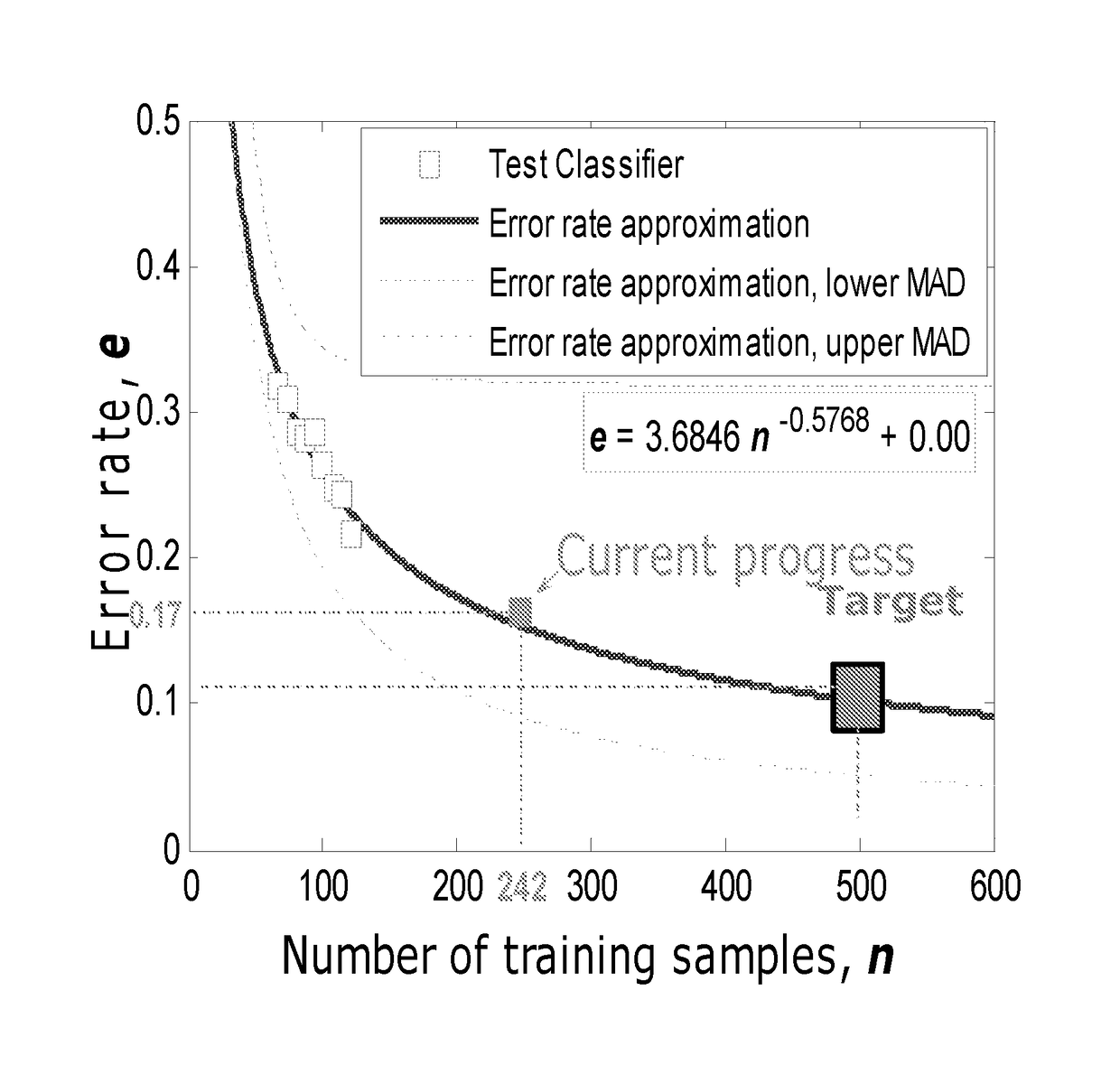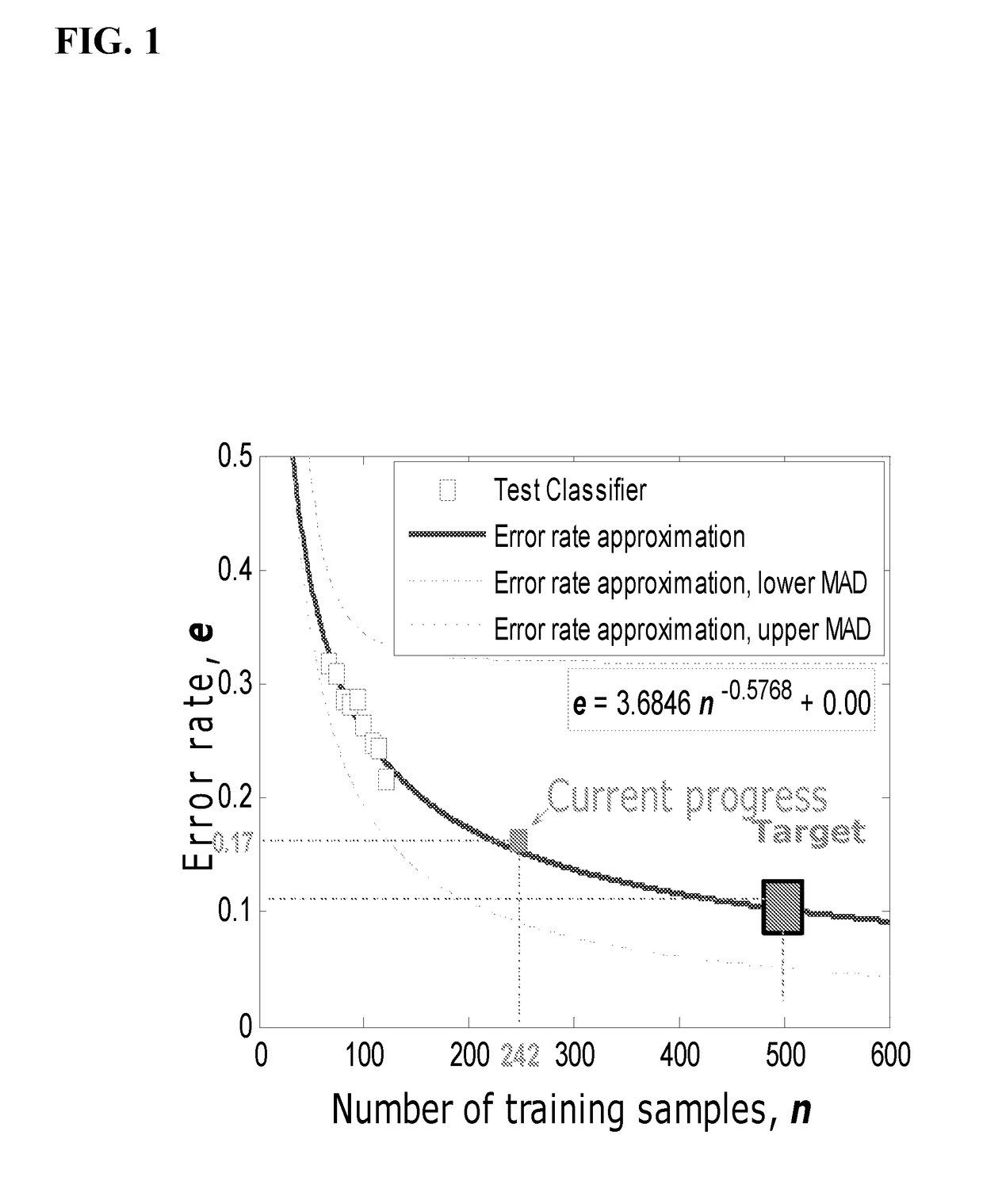Methods and compositions for diagnosing or detecting lung cancers
a technology of lung cancer and composition, applied in the field of methods and compositions for diagnosing or detecting lung cancer, can solve the problems of 15% of lung cancer patients, difficult to accurately predict which genes will actually be improperly regulated in response to a given mirna, and difficult to identify genetic changes that differentiate smokers from smokers
- Summary
- Abstract
- Description
- Claims
- Application Information
AI Technical Summary
Benefits of technology
Problems solved by technology
Method used
Image
Examples
embodiments
[0111]In one embodiment, a multi-analyte composition for the diagnosis of lung cancer comprises (a) a ligand selected from a nucleic acid sequence, polynucleotide or oligonucleotide capable of specifically complexing with, hybridizing to, or identifying an mRNA gene transcript from a mammalian biological sample; and (b) an additional ligand selected from a nucleic acid sequence, polynucleotide or oligonucleotide capable of specifically complexing with, hybridizing to, or identifying an miRNA from a mammalian biological sample. Each ligand and additional ligand binds to a different gene transcript or miRNA and the combined expression levels of the gene transcripts and miRNA identified form a characteristic profile of a lung cancer or stage of lung cancer.
[0112]In another embodiment, the gene transcripts and miRNA of the above composition are selected from Table 1. In another embodiment, the gene transcripts and miRNA of the composition are selected from rankings 1 to 119 of Table 1. ...
example 1
ze Calculation
[0130]This calculation is based on the PAXgene data described in FIG. 1. We used the data from the current PAXgene dataset of 23 cancer patients and 25 controls to project the sample size that would be needed to reach the desired 90% accuracy on a test set. We randomly selected training sets of different sizes varying between 24 and 44 samples, corresponding to 50 to 90% of all the samples. The sample size was progressively increased by increments of two to allow the addition of one cancer and one control sample at each step. For every given sample size, 50 re-samplings were done.
[0131]A t-test was then performed on each training set to identify the top 100 genes ranked by p-values. The gene lists were further reduced by removing any low expressors (expression that did not exceed twice the average background level for all the samples in the cancer and non-cancer groups).
[0132]The remaining 58 genes were then used to cluster all the samples including those initially hel...
example 2
ication and Quality Assessment
[0134]RNA purification for gene and miRNA array processing are carried out using standardized procedures as a regular service by the Genomics Core. PAXgene RNA is prepared using a standard commercially available kit from Qiagen™ that allows simultaneous purification of mRNA and miRNA. The resulting RNA is used for mRNA or miRNA profiling.
[0135]The RNA quality is determined using a Bioanalyzer. Only samples with RNA Integrity numbers >7.5 were used. A constant amount (100 ng) of total RNA was amplified (aRNA) using the Illumina-approved RNA amplification kit (Epicenter). This procedure provides sufficient amplified material for multiple repeats of gene and miRNA expression. RNA amounts as low as 10 ng can be used if smaller samples are to be acquired at a later date with alternative collection systems.
PUM
| Property | Measurement | Unit |
|---|---|---|
| Fraction | aaaaa | aaaaa |
| Fraction | aaaaa | aaaaa |
| Fraction | aaaaa | aaaaa |
Abstract
Description
Claims
Application Information
 Login to View More
Login to View More - R&D
- Intellectual Property
- Life Sciences
- Materials
- Tech Scout
- Unparalleled Data Quality
- Higher Quality Content
- 60% Fewer Hallucinations
Browse by: Latest US Patents, China's latest patents, Technical Efficacy Thesaurus, Application Domain, Technology Topic, Popular Technical Reports.
© 2025 PatSnap. All rights reserved.Legal|Privacy policy|Modern Slavery Act Transparency Statement|Sitemap|About US| Contact US: help@patsnap.com



